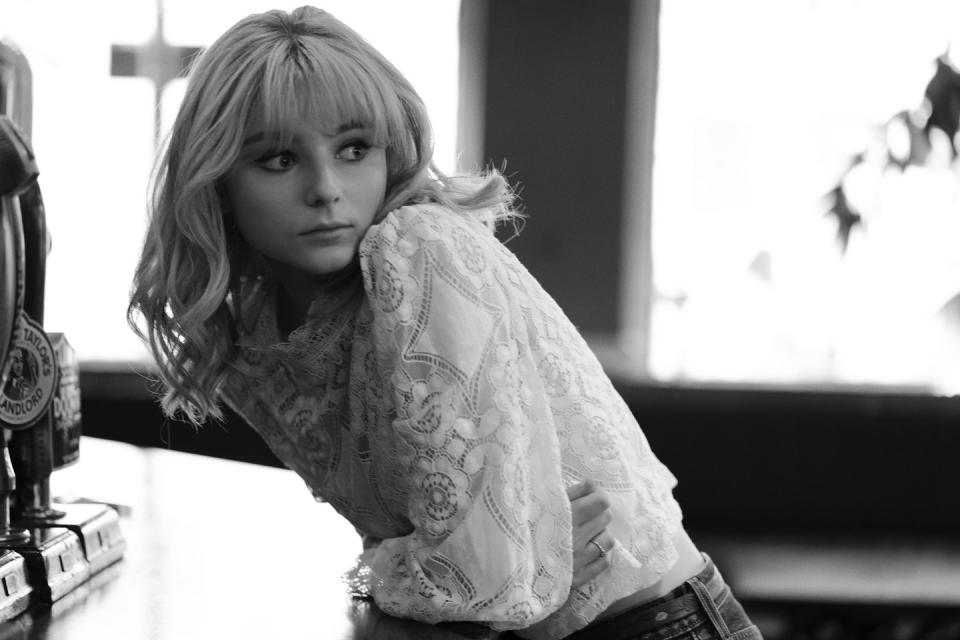Why you should watch… the fashion-world psychological thriller Last Night in Soho

Mirrors are portals to another world in Last Night in Soho, the latest style-conscious film from the British writer-director Edgar Wright. Radiating bright-eyed enthusiasm, the London College of Fashion fresher Eloise (Thomasin McKenzie, fittingly gauche) speaks her dream of becoming a successful designer into her bedroom mirror’s reflective surface. The aspiring lounge singer Sandie (an underused Anya Taylor-Joy), meanwhile, averts the chilly gaze of steamy cocktail-bar mirrors, unable to reckon with the person she has become in the dogged pursuit of her ambition. Hopscotching between the English capital in the present day (with Eloise) and the 1960s (with Sandie, and Eloise as a rapt, time-hopping bystander), the movie gradually interweaves its two narratives – smudging the line separating 20th- and 21st-century terrors – with shocking results. Its central characters are twinned and doubled throughout; Eloise appropriates Sandie’s blonde beehive and shift dresses, trying to approximate this sultry-voiced woman who haunts her dreams and, more widely, the untouchable glamour of the Swinging Sixties.

Eloise mentally inhabits the past, stuck in a state of arrested development for a time she never knew. We first meet her in the Cornwall cottage she shares with her grandmother, whose fusty decor doesn’t appear to have been updated for decades. An old soul, Eloise bedecks her teenage bedroom in Breakfast at Tiffany’s (1961) and Sweet Charity (1969) movie posters, and, when packing for university, stuffs her suitcase with Cilla Black and the Searchers LPs, almost forgetting to bring socks alongside all her Sixties memorabilia. When Eloise arrives in London, she is ostracised by her classmates for being a meek “country mouse” – Synnove Karlsen as her name-dropping, back-stabbing roommate Jocasta is a comic standout – so decides to leave halls. She attempts to recreate the comfort of home by moving in with another elderly woman (the late Diana Rigg in her final role), a clear substitute for her loving grandmother, in a Fitzrovia bedsit that, to Eloise’s delight, is similarly trapped in the 1960s. McKenzie sells her character’s naivete well, rolling with waves of anxiety when faced with the shock of metropolitan life in an overwhelming London. Hers is a two-part role in many respects, since the story’s hard left turn into horror in the final act means the actress must transform into a scream queen, a part she performs admirably enough, her mascara smeared raccoon-like around her eyes as she lets out terrible, piercing shrieks.

Last Night in Soho is, ultimately, another exercise in style from Wright, who has turned his hand to many a genre, from the comic-book gusto of the cult hit Scott Pilgrim vs. the World to the celebrated zombie-comedy hybrid Shaun of the Dead. As we have come to expect from such a detail-oriented director, the production design of his most recent effort is tremendous. The 1960s scenes, in particular, are loaded with carefully mounted period touches: Volkswagen beetles honk along Piccadilly Circus, where lit-up billboards blare with advertisements for Typhoo tea and Sean Connery’s new James Bond picture. Wright establishes a clear distinction between the drab grey palette of today’s London (as cold and unwelcoming as the city has proved to Eloise), and the rich primary colours of the Sixties, where intense yellows, reds and blues deliciously commingle beneath plumes of cigarette smoke and strobing neon lights. As Eloise slowly realises the picture-perfect allure of the Sixties is nothing but a glossy sheen obscuring a shadowy reality, the film reflects this by introducing a roughness to the previously immaculate imagery. The camera whizzes around Sandie and her fellow singers’ dressing-rooms in a psychedelic haze, peeling away the showbiz glamour with glimpses of its grungy, fetid underworld built on female exploitation. Sandie, whose very identity is dismantled by predatory men, is shot as if through a kaleidoscope after this sequence, stills of her blankly accepting face fracturing and fusing back together in disturbing combinations.

Despite its visual brilliance, the film does come apart at the seams by the end, with fraying plotlines and pat conclusions about mental illness. Also, given it takes place in and around a sartorially extravagant college, Last Night in Soho is lacking in the costuming department: the dresses are pleasant to look at in the moment, but are forgotten as quickly as last season’s fast fashion. (I couldn’t help but compare McKenzie’s flimsy newsprint gown to Sandy Powell’s show-stopping, recycled-paper design from this spring’s Cruella, a lesser film, absolutely, but one with a more refined sense of style.) For its flaws, Last Night in Soho remains a thoroughly entertaining descent into the squalor lurking behind London’s thrumming nightlife, a curtain-pulling peer behind the scenes to reveal its waking nightmares.
‘Last Night in Soho’ is in cinemas now.
You Might Also Like


